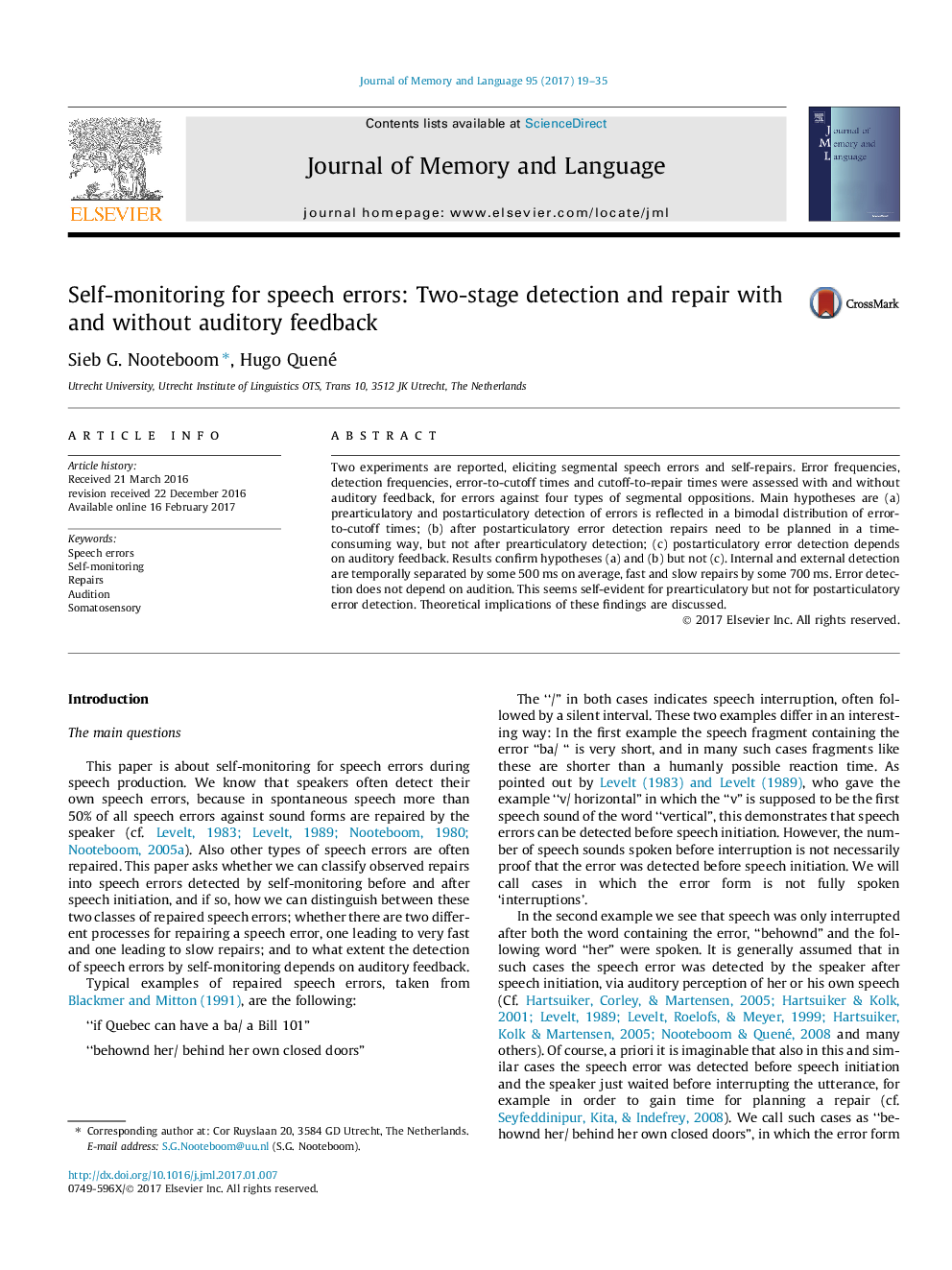| Article ID | Journal | Published Year | Pages | File Type |
|---|---|---|---|---|
| 5042490 | Journal of Memory and Language | 2017 | 17 Pages |
â¢Two experiments on self-monitoring for speech errors are reported.â¢Error-to-cutoff times are distributed bimodally.â¢The delay between self-monitoring internal and overt speech is roughly 500 ms.â¢The delay between fast and slow repairs is roughly 700 ms.â¢Hearing one's own voice is unnecessary for self-monitoring overt speech.
Two experiments are reported, eliciting segmental speech errors and self-repairs. Error frequencies, detection frequencies, error-to-cutoff times and cutoff-to-repair times were assessed with and without auditory feedback, for errors against four types of segmental oppositions. Main hypotheses are (a) prearticulatory and postarticulatory detection of errors is reflected in a bimodal distribution of error-to-cutoff times; (b) after postarticulatory error detection repairs need to be planned in a time-consuming way, but not after prearticulatory detection; (c) postarticulatory error detection depends on auditory feedback. Results confirm hypotheses (a) and (b) but not (c). Internal and external detection are temporally separated by some 500Â ms on average, fast and slow repairs by some 700Â ms. Error detection does not depend on audition. This seems self-evident for prearticulatory but not for postarticulatory error detection. Theoretical implications of these findings are discussed.
